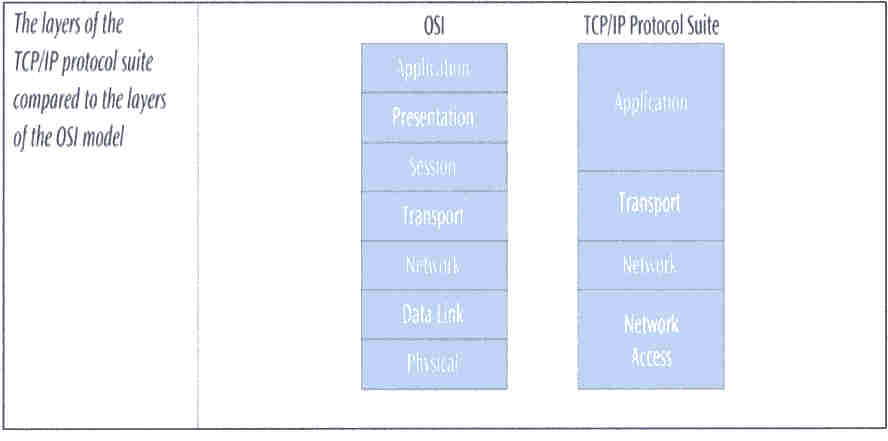Streaming Protocols 5-7
Reference Model
The protocols from the Open System Interconnection Model (OSI) are described by Steinmetz and Nahrstedt (2004), Künkel (2003) and White (2007) as reference points to allow communications over the Internet. The model is provided to allow diverse manufacture’s equipment to communicate over a network. The model simply describes the relationship of network’s hardware and software components and associated protocols in seven layers:
- Application Layer- provides services to user applications, for example File Transfer Protocol (FTP), (HTTP), and RealTime Streaming Protocol (RTSP). HTTP is a stateless, object-oriented protocol for networks based on a client-server connection. HTTP uses TCP as a transport protocol; however, it can use any connection-based protocol. HTTP can also be used for streaming media provided the computers are properly configured.
- Presentation Layer- provides network communication services, for example translation, compression, and encryption.
- Session Layer- Establishes maintains and terminates node-to-node communication. Layer is hardly used.
- Transport Layer- ensures reliable end-to-end network through TCP and User Datagram Protocol (UDP). UDP is no-frills transport protocol that does not establish connections or watch for packets of data called datagrams that have been in the network for too long. This is what makes it well suited for streaming media since it reacts fairly flexibly to the loss of individual data packets. This low overhead helps reduce bandwidth requirements and makes streaming media even more possible. In contrast TCP adds a variety of header information which is used both by the sender and receiver (White, 2007). TCP establishes a connection and its overhead is greater with its sequencing, check-sum, and other acknowledgment requirements.
- Network Layer- Establishes, maintains and terminates end-to-end network communication for example Internet Protocol (IP).
- Data Link Layer- is a logical link layer and incorporates medium access control. It maintains error and flow control. White defines medium access control as a protocol that allows a computer such as a workstation to access the transmission system of a local area network.
- Physical Layer- maintains the point-to-point data links which consist of cables, fiber optics, and interface cards etc.
(Künkel, 2003)
Interactions of these layers are shown in the Appendix: Path of a Web.
There is also a four layer model called the TCP/IP protocol suite. According to White (2007), this suite was created by a group of computer scientist and is more popular than the OSI model. It incorporated TCP and IP protocols. Greenspun (1999) defines TCP/IP protocols as the standards that govern transmission of data among computer systems.
They are the foundation of the Internet. IP is a way of saying, “Send these next 1,000 bits to Computer B.” TCP is a way of saying, “Send this stream of data reliably between Computer A and Computer B” (it is built on top of IP). (Greenspun, 1999, p. 564)
Figure 1: Layers shows the comparison of the OSI model to the TCP/IP suite.

(White, 2007, p.20)
Return to Web Site's Index
DELAWARE'S MIDDLETOWN ODESSA AND TOWNSEND AREA
